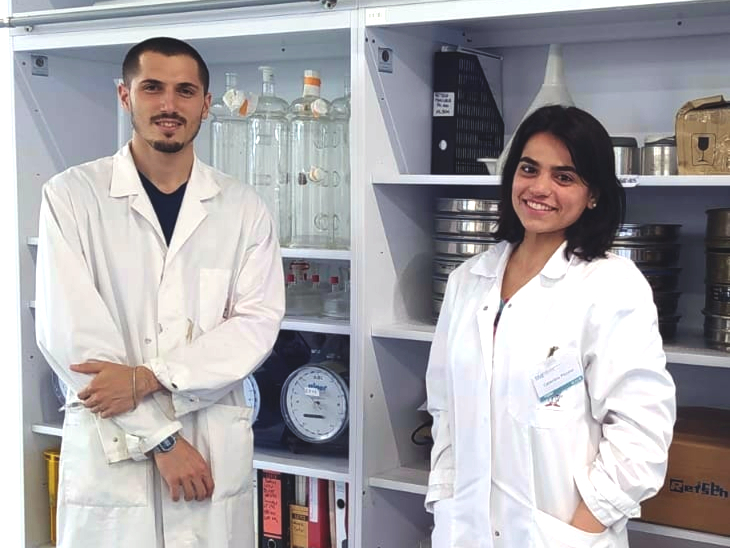Annarita Fiorente holds a master’s degree in environmental engineering from the Politecnico di Bari in Italy and is currently completing an internship at the TUHH Institute for Environmental Engineering and Energy Economics. In this interview, she talks about her involvement in a research project on bioplastics and the experience she gained during her stay at HAMBURG INNOVATION PORT.
Annarita, during your internship you are working on a research project on the influence of biodegradable plastics in municipal waste. What exactly is this project about?
During my internship I am supporting Giovanni Gadaleta, also from Politecnico di Bari, in a research stay at TU Hamburg as part of his PhD. We are investigating the influence of cellulose acetate on processes of anaerobic digestion and composting.
Cellulose acetate is a biodegradable, bio-based plastic that can be used, for example, to produce sustainable packaging for food. Accordingly, it also ends up in municipal waste. Anaerobic digestion and composting are processes used in the recycling of organic waste to produce biogas and compost.
Through tests in the laboratory, we want to find out how cellulose acetate affects these recycling processes, for example, how it influences the quality of the compost obtained. The results will help to evaluate the sustainability of cellulose acetate in the waste management chain.
To what extent is a bioplastic like cellulose acetate related to the sustainability of the waste management chain?
Plastics are indispensable in almost all sectors of the economy today. However, conventional polymers are mostly derived from fossil fuels, and their use therefore has a significant impact on the environment and climate.
Bioplastics such as cellulose acetate can be a more environmentally friendly solution. This material is derived from cellulose, which is found in plants – so it comes from a renewable source of raw materials. It is also biodegradable, as it can be broken down by microorganisms into stable components that are not harmful to the environment. In this respect, such plastics could play an important role in a sustainable circular economy.
Cellulose acetate could have a further advantage in waste recycling. Because here it could contribute to the formation of biogas without impairing the quality of the compost that is obtained from the decomposition products in the next step.
What are your plans for the future, what do you wish for your professional career?
First of all, I will complete my internship until the end of July and during this time I would like to learn as much as possible about the instruments and analytical methods used in our laboratory. In addition to Giovanni, the staff of the Sustainable Resource and Waste Management working group at the Technical University of Hamburg are also helping me with this.
During my studies in environmental engineering, I was always particularly interested in the topic of waste management and would like to continue working in this field – preferably in a team with other graduates from different disciplines. Because I believe that by working together you can achieve real innovations and contribute to the protection of our planet.
What did you learn for yourself personally during your stay in Hamburg?
I am very grateful to Professor Sabino De Gisi from Politecnico di Bari and my tutor Caterina Picuno from TU Hamburg for making this internship possible for me. My stay here has not only enriched my studies but also me personally.
Spending three months in another country and meeting researchers and students from all over the world – it allowed me to get to know other cultures and habits, broaden my horizons and certainly improve my English skills. I am also in the process of learning German to be able to exchange ideas even better.
Thanks to my experience here, I have become more aware of my abilities and gained self-confidence. In summary, I can say that my stay so far has had only positive aspects and I will do everything I can to complete it in the best possible way.
What will you remember from your stay at HAMBURG INNOVATION PORT apart from the research work?
I like to imagine how extraordinary the research center will be once it is completed. The combination of modern architecture, surrounded by lots of greenery, with the view of the canals in Harburg’s inland port make this a very pleasant place to work. I can well imagine that many more innovative ideas and products will be created here and I would like to come back again when all the buildings are standing.
Further information
- LinkedIn profile of Annarita Fiorente and Giovanni Gadaleta
Giovanni Gadaleta on ResearchGate and Google Scholar - Website of the TUHH Institute of Environmental Technology and Energy Economics
Information for international guest scientists at the TU Hamburg - International partnerships of TU Hamburg in Studies and Research
